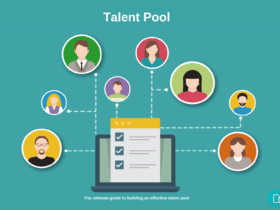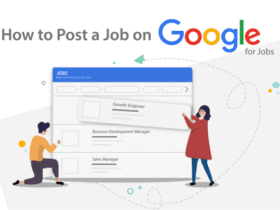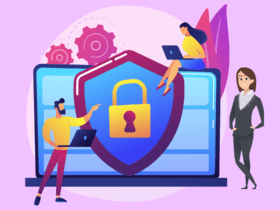Are there any effective ways to improve employee efficiency? Read this article to find out what employee productivity is all about and the expert methods to increase it at your workplace.


Amongst the biggest challenges that businesses are facing is helping employees reach their efficiency at max levels. With more efficiency, employees can produce better results with the same resources available at their disposal.
When it comes to boosting employee efficiency and productivity, understanding the actual working hours of an employee is pivotal.
Especially for small businesses, where every minute directly affects the bottom line, gaining clarity on how time is utilized is essential.
That’s why many businesses have started buying JoinHomeBase’s time clock, which is the best time clock for small businesses, to improve their employee efficiency.
By leveraging a portable digital time clock system, small businesses can ensure that employee work hours are accurately tracked, leading to improved efficiency and streamlined operations.
A study conducted by vouchercloud in the UK shows that an average office worker is productive only for 2 hours and 23 minutes each day. And that’s not just in one but in all occupations. It is 60% less productive time than it should be. Surely you don’t want your employee’s company to suffer from low productivity, right?
We recommend you to read this article till the end to get the complete info on employee efficiency plus top ways to improve it. We will cover different things regarding employee efficiency thoroughly in this blog post.
Table of Contents
What is Employee Efficiency?
Employee efficiency definition – Employee efficiency can be defined as the value produced from the resources spent on a task or project. It can also be said of the quality of output realized for the input invested. It’s also known as employee productivity.
In simple words, it refers to the capability of your employees or teams to do their work effectively and efficiently. Several factors affect employee efficiency, namely skills, experience, knowledge, motivation, and others.
The Best Ways to Improve Employee Efficiency In 2023
1. Trust and Delegate Without Hesitation
It’s easier said than done, yes we know that but it’s a necessary thing to do. We understand it’s natural that you’re concerned about your company and want to involve in everything that’s happening. It’s agreeable that maintaining quality is of utmost priority. But keeping a check on details by yourself instead of delegating can waste a lot of precious time.
So you need to give responsibilities to your skilled employees by believing that they will get the job done. This will not only boost their morale but also allow them to acquire new skills and leadership experience. Trust in them, they won’t disappoint you.
2. Tasks and Skills Should Match
Getting a good idea about your employees’ skills and their nature is necessary. Just asking to perform tasks well isn’t going to work. Before you give an assignment to your employee, think if that employee is suitable for it or not. In case the employee is not suitable then find someone else who has the right skills and style to give that assignment.
For instance, an outgoing, creative, and divergent thinking person might be the best selection for pitching ideas. Whereas if you put that person in charge of something serious & detail-oriented task then he/she might struggle. Executive leadership coaching helps managers understand employees’ strengths and weaknesses to assign tasks fittingly.
3. Set Clear and Focused Goals to Increase Efficiency
Employees can’t be efficient in case they don’t have pre-determined goals. In absence of realistic and clear goals, the productivity of employees will suffer. That’s why assign clear tasks, and convey your expectations, and the impact it will make.
You can assure improved efficiency by providing SMART (specific, measurable, attainable, realistic, and timely) goals to your employees. Set these and your employees will know what they need to achieve.
4. Improve Communication to Improve Efficiency
Do you want to increase the efficiency of your employee and workplace efficiency? Then you need to look after communication. In today’s era, we have the latest, more efficient communication methods because of the current technology. There are many ways you can communicate namely email, social networking tools like Slack & Microsoft Teams, and so on.
We suggest not to completely depend on emails as these are not as efficient as you might think it is. Emails can take up to 28% of employees’ time, a study conducted by McKinsey found it.
That’s why you should encourage your employees to occasionally opt for the old ways of communication like simple talk. A conversation over a quick phone call or a meeting can solve a situation within a few minutes.
5. Give Your Employees Incentives
Incentivizing your employees is among the best ways to encourage them to improve efficiency in their work. You can give your employees personalized incentives. It simply means – giving them rewards or recognition as per their preference.
For example, some employees like to receive recognition publically whereas others would like to receive it in private.
Some of the top incentives you can give to your top performers:
- Paid time off (PTO): You can offer them paid leaves instead of a bonus or a raise.
- Give a Handwritten Note: Send a handwritten note to them which expresses your thankfulness for the efforts they’ve made. Trust us, it will make them feel valued and tells them that you care.
- A Wellness Program: Try to implement a workplace wellness program that saves your money spent on health insurance. Additionally, it will let you lessen the number of sick days.
- Take Them on a Dine Out: You can take them out for lunch, dinner, etc. Who doesn’t like a free meal, Right?
6. Eliminate Excess Work to Improve Efficiency
If you want your employees to be efficient, then do not assign them smaller, less important tasks and meetings. This is because if they are burdened with too many activities, they won’t be able to focus on more impactful tasks. Remove as many roadblocks as possible to save time and help them put more concentration on the top priority activities.
7. Training and Development Program
Providing your employees with training and development will bring you one step closer to making them efficient. For this, you can work with your employees to guide them when needed, and raise their skills, competencies, and knowledge.
You can provide courses, workshops, coaching, seminars, or anything which will help their development. Also, you need to move your top performers to more important roles and give them more responsibilities to support their growth. After implementing these things you will see very good results.
8. Allow Flexibility to Increase Efficiency
Why do we say this? Well because it’s better, convenient and promotes fast completion of work. A survey conducted by ConnectSolutions indicated that 77% of remote workers, a few times, were increased productive than usual. Additionally, 30% of employees were doing more work in less duration and 24% did more work in the same period.
Sometimes employees can’t reach the office either because of personal reasons or being sick. So instead of giving them full-on leave, allow them to work from home if they’re in a condition of doing work. This will help you not only reduce leaves but also lead to more efficient work. Along with that your employees will like it and utilize their productive time.
9. Share Constant Feedback
How would your employees be efficient if they don’t know where they’re falling short? That’s why you need to convey to them the areas where they’re exceptional and where they need to work more on. To tell this, holding an individual meeting with each employee is necessary.
But don’t just share your feedback with them, let them share what they have in mind about their needs. Ask them what they require and how you can help them to be better at their job.
This will not only will help you plan your further actions to help them but also promote a culture of open communication. This will surely let you increase employee efficiency in the long run.
10. Set Realistic Deadlines & Goals
Finally, to attain sustainable employee efficiency you need to set realistic goals and deadlines. Once or twice your team might successfully accomplish a project when provided with a demanding deadline. But if this is made a norm it can lead to burnout at the workplace and it can hamper employee efficiency badly.
So before setting a deadline or goal, take into consideration the time and resources available.
Think Upon These Before Setting Up Goals and Deadlines:
- The milestones you will use to measure progress.
- The steps which are required to meet the target.
- Time duration it will take to attain the target.
- Possible hurdles that might come.
- What an ideal output looks like.
The Importance of Improving Employee Efficiency
There is a direct relation between efficiency and revenues with profit margins. The relation between these is a positive correlation meaning if the efficiency is high then revenue and profits will be high and vice versa.
This is why it’s important to think about improving employee efficiency or productivity.
Many benefits which you can get through increasing employee efficiency including these top ones:
- When employees and teams work in the correct way, it enhances the output and minimizes the input at the same time.
- It helps create a positive work environment as employees who’re committed to working efficiently are cheerful and energetic. And these employees are the ones who make the environment positive.
- Efficient employees are highly engaged in their work which helps them to be more focused on achieving their goals. It also makes it easy for businesses to retain and recruit better talent as well.
- The optimum utilization of time and efforts is assured because of increased efficiency.
- Inefficiency in the workplace leads to an increased risk of burnout. This is because inefficiency costs employees more effort to achieve the same results.
Efficient employees simply mean you are accurately assigning your workforce and resources. This brings out more substantial and better best results faster for your company.
How to Measure Employee Efficiency?
Measuring employee efficiency is a difficult task. Each kind of job position has different metrics and benchmarks to define efficiency in their role.
For instance, a production-line team will have several completed products as the prime metric. In simple words, speed and consistency will indicate efficiency. Whereas if you look at creative professionals, they will have intangible metrics related to the quality and the influence it makes on the audience over a period.
Knowing ways to measure efficiency is crucial for you. But there will be a risk of putting too much supervision and micromanagement on employees in the process. If not, you might even end up measuring the wrong things altogether.
If you want to start measuring the efficiency of employees then you need to study in detail how you’re going to measure single or team productivity.
A few things you need to consider when measuring employee efficiency:
- Decide a standard for the product: How desired outcome looks like for individuals, teams, and projects? What is the result you wish for? In what time frame it is to be met?
- Ascertain the available productive time: Take the whole time of the working week and deduct unproductive time such as breaks, downtime, etc. It will provide you clarity on the actual amount of time that you can allot to work in a week, quarter, and year.
- Utilize standard product and productive time as criteria: Use these two things to measure individual output against time spent on a task.
Summing up
To conclude, we want to say that employee efficiency is a necessary thing to keep an eye on and make it as best as possible. If it’s done the right way it leads to lots of positive things like better resource management, a positive environment at the office, more profits, and so on.
Yes, it’s a little bit hard to bring everything on track. Nonetheless, using the techniques given in this article you can better the employee efficiency at your workplace.
Hope this article helps! to access more useful human resource articles visit our blog by clicking here.
Frequently Asked Questions:
What is employee efficiency and why is it important?
Employee efficiency refers to the ability of employees to accomplish tasks effectively and productively. It is important because it directly impacts the overall performance and success of an organization.
How to improve employee efficiency
To improve employee efficiency, you can provide clear expectations, offer training and development opportunities, encourage open communication, promote work-life balance, and recognize and reward employees for their achievements.
What are top 3 ways to improve on performance at work?
Set clear goals: Clearly define your objectives and create measurable goals that align with your role and the organization’s objectives. This will provide clarity and focus, allowing you to prioritize tasks and work efficiently towards achieving those goals.
Enhance your skills: Continuously invest in your professional development by acquiring new skills and knowledge relevant to your role. Seek out training opportunities, attend workshops or conferences, and engage in self-study. Improved skills will enhance your performance and make you more valuable to your organization.
Seek feedback and learn from it: Actively seek feedback from your supervisor, colleagues, and customers to understand areas for improvement. Embrace constructive criticism and use it as an opportunity to learn and grow. Apply the feedback received to refine your work processes and enhance your performance over time.
What are the key factors that influence employee efficiency?
Several factors influence employee efficiency, including workplace culture, leadership style, workload management, employee motivation, technology and tools, and the availability of resources and support.
















